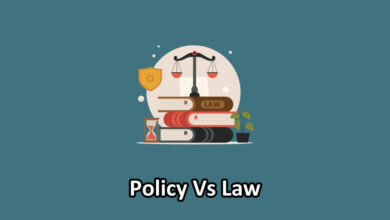Revaluation and impairment are two crucial concepts in accounting that play a pivotal role in reflecting the true financial health of an organization. Revaluation involves reassessing the value of assets, while impairment deals with recognizing a reduction in the value of assets below their carrying amount.
These concepts are essential for ensuring accurate financial reporting and decision-making. Understanding the difference between revaluation and impairment is critical for financial professionals and stakeholders.
Revaluation Vs. Impairment (A Comparison)
| Revaluation | Impairment |
|---|---|
| Revaluation is the process of adjusting the carrying amount of an asset to its current fair value. | Impairment refers to a permanent decrease in the value of an asset, where the carrying amount exceeds its recoverable amount. |
| Revaluation is a proactive adjustment that involves revising the carrying amount of an asset to reflect its current fair value in the market. | Impairment acknowledges a lasting reduction in the value of an asset, reflecting conditions that lead to a decline in its recoverable amount. |
| Revaluation is initiated proactively in response to significant changes in market conditions or when an asset's fair value deviates from its carrying amount. | Impairment is reactive and triggered by specific indicators, such as a decline in the asset's recoverable amount, signaling the need for impairment testing. |
| Revaluation is often conducted periodically, especially for assets with fluctuating market values, to ensure that carrying amounts align with current fair values. | Impairment testing is not a routine process but is prompted by specific indicators suggesting a potential decline in the recoverable amount of an asset. |
| Revaluation directly impacts the balance sheet and equity by adjusting the carrying amount of the asset, reflecting the change in its fair value. | Impairment impacts the income statement, reducing the reported net income and subsequently affecting equity. |
Explain What is Revaluation?
Revaluation is the process of reassessing the value of tangible assets, such as property, plant, and equipment, to reflect their current fair market value. This adjustment is made to ensure that the asset’s carrying amount on the balance sheet aligns with its current economic worth.
Revaluation is typically conducted by engaging external appraisers or using internal experts. The process involves assessing the asset’s market value based on factors like comparable market prices, the asset’s condition, and any changes in economic conditions.
The resulting fair value is then compared to the asset’s carrying amount, and the difference is recorded on the balance sheet.
Examples of When Revaluation is Appropriate
Revaluation is appropriate when there is a significant fluctuation in the market value of an asset. For instance, if real estate prices in a region experience a substantial increase, a company that owns property in that area may choose to revalue its assets to reflect the current market conditions accurately.
Explain What is Impairment?
Impairment is the recognition of a decrease in the value of an asset, such as goodwill, beyond its recoverable amount. The recoverable amount is the higher of an asset’s fair value less costs to sell and its value in use. Impairment accounting is crucial for preventing the overstatement of asset values on the balance sheet.
The assessment of impairment involves comparing the carrying amount of an asset with its recoverable amount. If the carrying amount exceeds the recoverable amount, the asset is considered impaired, and the difference is recognized as an impairment loss on the income statement.
Examples of Indicators of Impairment
Indicators of impairment include economic downturns, changes in legal or regulatory environments, and adverse changes in the market. For example, if a company’s cash-generating unit is not meeting performance expectations due to increased competition, it may signal the need for impairment testing on the associated assets.
Key Differences Between Revaluation and Impairment
- Nature of Adjustment: The primary difference lies in the nature of the adjustment. Revaluation involves updating the carrying amount of an asset to reflect its current fair value, while impairment recognizes a permanent decrease in an asset’s value.
- Timing of Recognition: Revaluation is a proactive measure that occurs when there’s a significant change in market conditions. In contrast, impairment is reactive, triggered by indicators that suggest a decline in the recoverable amount of an asset.
- Frequency of Application: Revaluation is often conducted periodically, especially for assets with fluctuating market values. Impairment testing, on the other hand, is triggered when specific indicators arise and is not necessarily a regular process.
- Impact on Financial Statements: Revaluation impacts both the balance sheet and equity, as the adjustment directly affects the asset’s carrying amount. Impairment, however, impacts the income statement, reducing the reported net income and, subsequently, equity.
Accounting Standards and Regulations
IFRS provides guidance on when and how to apply revaluation and impairment. It emphasizes the importance of fair value measurement and disclosure of the methods used. Under IFRS, revaluation is optional, but if chosen, it must be applied consistently to an entire class of assets.
GAAP also addresses revaluation and impairment, but the treatment may differ from IFRS. For example, GAAP generally does not allow for the revaluation of property, plant, and equipment. Impairment testing under GAAP follows a two-step process, assessing whether impairment exists and then determining the impairment amount.
Variances in Treatment of Revaluation and Impairment
The differences in treatment under IFRS and GAAP can lead to variations in financial reporting. Companies operating in multiple jurisdictions must navigate these differences to ensure compliance and provide transparent financial statements.
Common Misconceptions
One common misconception is that revaluation always leads to a positive adjustment. In reality, revaluation can result in both positive and negative adjustments, depending on whether the fair value is higher or lower than the carrying amount.
Misconceptions about impairment often revolve around the belief that it only applies to tangible assets. In fact, impairment can also affect intangible assets like goodwill and certain financial assets.
It’s crucial to clarify that revaluation is a proactive measure aimed at reflecting the current market value of an asset, while impairment is a reactive process triggered by specific events or indicators signaling a decrease in an asset’s recoverable amount.
Best Practices and Conclusion
Best Practices for Proper Application of Revaluation and Impairment
- Regularly assess the need for revaluation or impairment testing based on changes in market conditions and indicators.
- Document the methods and assumptions used in the valuation or impairment assessment to enhance transparency.
- Stay informed about updates to accounting standards to ensure compliance with relevant regulations.
Summarizing the Key Takeaways
Revaluation and impairment are vital tools for maintaining the accuracy of financial statements. Recognizing the differences, applying best practices, and staying compliant with accounting standards are key takeaways for financial professionals.
Continuous education on accounting principles is crucial for professionals to stay abreast of changes in standards and regulations. This ensures that organizations apply revaluation and impairment correctly, ultimately leading to transparent and reliable financial reporting.



